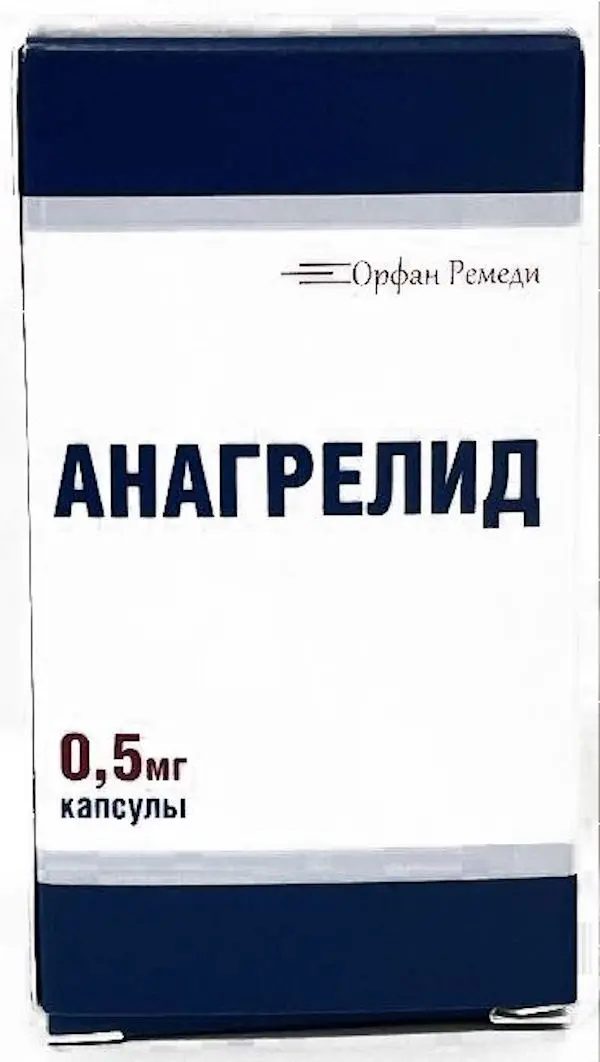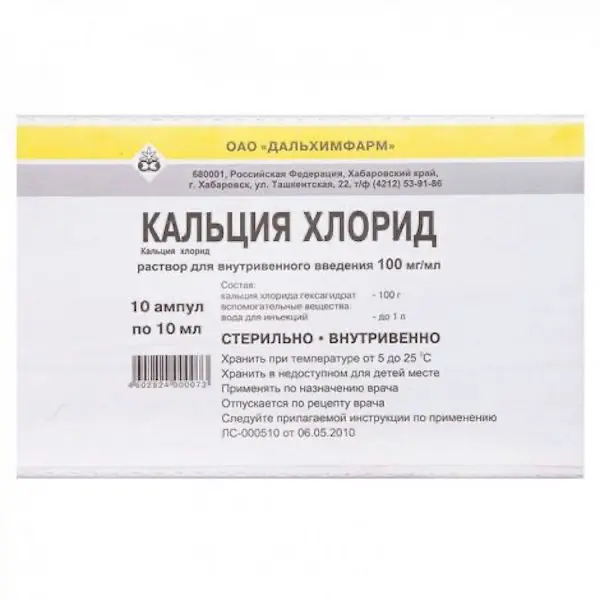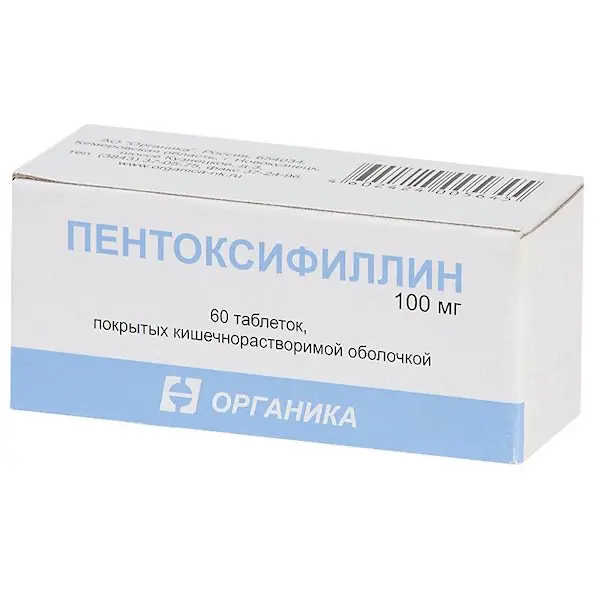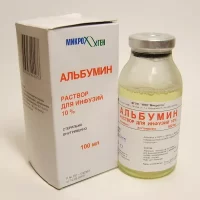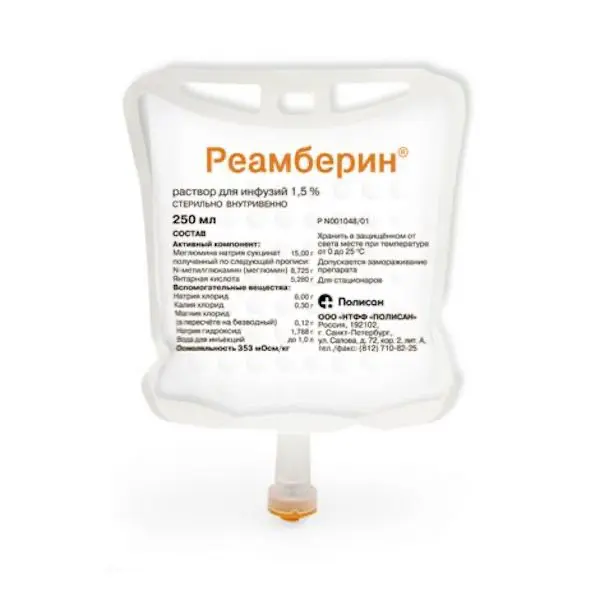Description
Anagrelide Pharmacodynamics
Anagrelide causes a selective, dose-dependent and reversible decrease in human platelet counts, but its exact mechanism of action is unknown. In cell culture, anagrelide inhibited the expression of transcription factors, including GATA-1 and FOG-1, necessary for megakaryocytopoiesis, resulting in decreased platelet production. Studies of human megakaryocytopoiesis in vitro have shown that inhibition of platelet formation is due to delayed maturation, as well as a decrease in the size and ploidy of megakaryocytes. Similar effects in vivo are revealed in bone marrow biopsy specimens from patients treated with anagrelide.
Anagrelide is a phosphodiesterase III inhibitor of cyclic adenosine monophosphate (AMP).
Clinical efficacy and safety
The safety and efficacy of anagrelide for reducing platelet counts were evaluated in 4 open-label, uncontrolled clinical trials that enrolled more than 4,000 patients with myeloproliferative hemoblastosis. In patients with essential thrombocythemia (ET), a decrease in platelet count <600×109/L or >50% relative to baseline and maintenance of this count for at least 4 weeks was considered a complete response. In clinical trials, the time to complete response ranged from 4 to 12 weeks.
Effect on heart rate (HR) and QTc interval
A double-blind, randomized, placebo- and actively controlled, crossover study of healthy men and women examined the effects of two different doses of anagrelide (volunteers taking anagrelide at a dose of 0.5 mg or 2.5 mg) on HR and QTc interval. A dose-dependent increase in HR was observed during the first 12 hours, the maximum increase in HR roughly corresponding to the time of reaching the maximum plasma concentration of anagrelide (Cmax). The maximum change in HR was observed 2 hours after drug administration and was +7.8 and +29.1 beats per minute for 0.5 mg and 2.5 mg doses, respectively.
An apparent transient increase in the QTc interval was observed with both doses of the drug simultaneously with an increase in HR; the maximum change in QTcF (corrected by the Friedericia formula) was +5.0 msec 2 hours after taking 0.5 mg and +10.0 msec one hour after taking 2.5 mg of the drug. The data indicate that the increase in QTc may be due to the physiological effect of increased HR and QT-RR hysteresis rather than a direct effect on repolarization.
Children .
In an open-label clinical trial in 8 children and 10 adolescents, which included both patients who had not previously received treatment with anagrelide and those who had taken the drug within the preceding 5 years, the mean platelet count decreased to controllable levels after 12 weeks of therapy.
In the pediatric clinical trials registry study, the mean platelet count on anagrelide decreased from the time of diagnosis and was maintained at a stable level for up to 18 months in 14 children with ET (4 children, 10 adolescents). In an earlier open-label clinical trial, a decrease in mean platelet count was observed in 7 children and 9 adolescents treated with anagrelide for 3 months to 6.5 years. Anagrelide should be administered to children with caution due to limited experience with its use in this age group because of the rarity of the disease (see section “Contraindications”).
The average daily dose of anagrelide used in children in all clinical trials varied widely. Nevertheless, generalized data suggest that the same initial and maintenance doses of the drug are indicated for adolescents as for adult patients. In children over 6 years of age, it is preferable to use a lower starting dose than in adults, namely 0.5 mg/day (see sections “Dosage and administration”, “Special indications”, “Side effects” and “Pharmacokinetics”). The optimal dose needs to be carefully selected for all children individually.
Indications
Elevated platelet counts for essential thrombocythemia in patients at high risk of complications in whom current therapy is poorly tolerated or does not reduce platelet counts to acceptable levels.
High risk for complications includes one or more of the following conditions:
– Age > 60 years;
– Platelet count > 1000 x 109/L;
– History of thrombo-hemorrhagic complications.
Contraindications
– Hypersensitivity to anagrelide or to any of the excipients of the drug.
– Severe hepatic impairment.
– Severe renal impairment (creatinine clearance < 30 ml/min).
– Children under 6 years of age (due to insufficient clinical data on safety and efficacy).
– Lactose intolerance, glucose-galactose malabsorption, congenital lactase deficiency.
Dosage and administration method
- The drug should be initiated by a physician experienced in the treatment of patients with essential thrombocythemia.
- For oral administration. The capsules should be swallowed in whole without breaking them and without dissolving their contents in liquids.
Adults and elderly: Recommended initial dose of anagrelide is 1 mg/day divided into 2 doses of 0.5 mg. - Children: the recommended starting dose of anagrelide is 0.5 mg/day.
Titration - Adults: the initial dose should be taken for at least one week. After one week of treatment, the dose can be gradually increased on an individual basis until the minimum effective dose required to reduce and/or maintain platelet counts to/near 600 x 109/l, with an optimal level of 150 x 109/l to 400 x 109/l. Dose increases should not be greater than 0.5 mg/day during any week of treatment. The maximum daily dose should not exceed 10 mg, the maximum single dose is 2.5 mg.
Children: The initial dose should be taken for at least one week. After one week of treatment, individual titration of the drug dose can be started. The target platelet count is determined by the physician individually. The dose increase should not be more than 0.5 mg/day during any week of treatment. The maximum daily dose should not exceed 10 mg, the maximum single dose is 2.5 mg. - Discontinuation of anagrelide in children should be considered if there is no satisfactory response after 3 months of therapy.
- Monitoring
The effect of anagrelide should be regularly evaluated (see section “Special Precautions”). If the initial dose exceeds 1 mg/day, the platelet count should be determined every 2 days in the first week of treatment and then at least once a week until a stable maintenance dose is achieved. Usually a decrease in platelet count is observed 7-21 days after the start of treatment, and in most patients the therapeutic effect is achieved and maintained against the background of taking the drug at a dose of 1-3 mg/day. In case of a drug interruption or after discontinuation of treatment, the increase in the platelet count (“withdrawal effect”) has a variable character. However, this parameter usually begins to rise within 4 days and comes back to the initial level within 1-2 weeks, and the platelet count may increase above the initial values. Frequent monitoring of the platelet count is therefore necessary. - In case of resistance to anagrelide therapy, other therapies should be considered.
Special patient groups
Elderly patients
The observed difference in pharmacokinetics of anagrelide in older and younger patients with essential thrombocythemia does not require adjustment of the initial dose or a dose titration procedure until an individual optimal maintenance dose of the drug is achieved. In a clinical study of anagrelide, approximately 50% of patients were 60 years of age or older, and these patients did not require an age-appropriate dose adjustment of the drug. Nevertheless, in elderly patients, serious adverse events were observed twice as often (mainly cardiovascular disorders).
Patients with impaired renal function
No dose adjustment is required in patients with impaired renal function (see Section “Pharmacokinetics”). - Patients with impaired liver function
For patients with moderate hepatic impairment, the starting dose of anagrelide should be 0.5 mg/day (see Section “Pharmacokinetics” and “Precautions”).
Anagrelide is contraindicated in severe hepatic impairment. In patients with mild to moderate hepatic impairment, hepatic function should be evaluated before and during therapy with anagrelide. - Children .
There are limited data on the starting dose of anagrelide in children. The starting dose of anagrelide for children has varied from 0.5 mg daily to 0.5 mg 4 times daily.
In this regard, a starting dose of 0.5 mg per day is recommended for children (see section “Pharmacological properties”).

